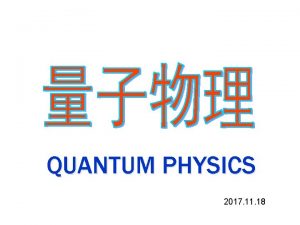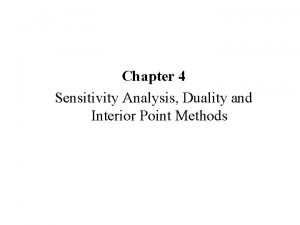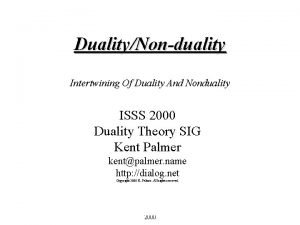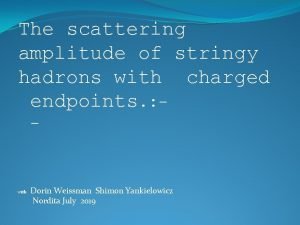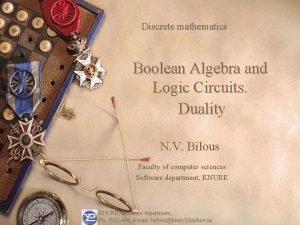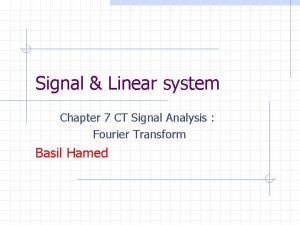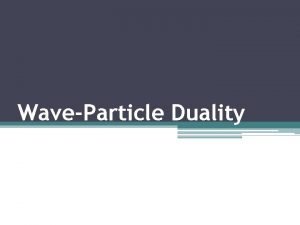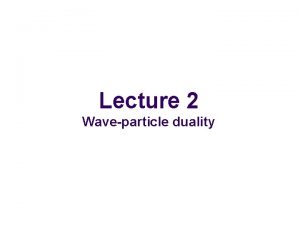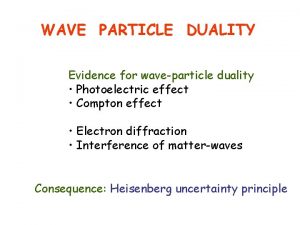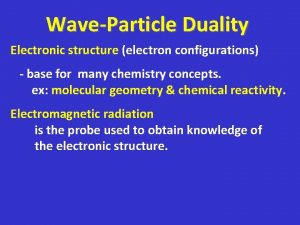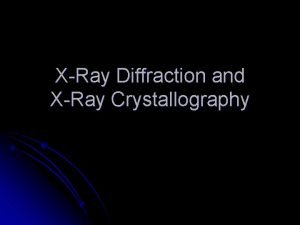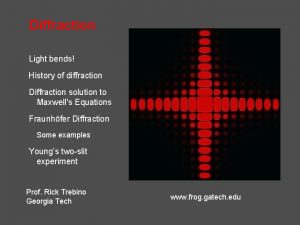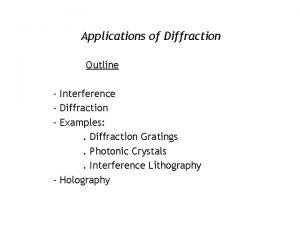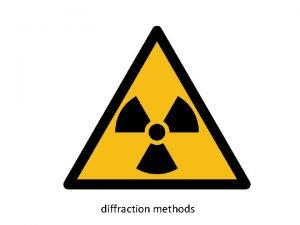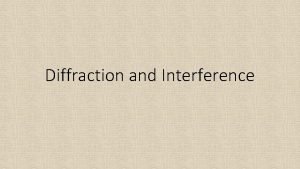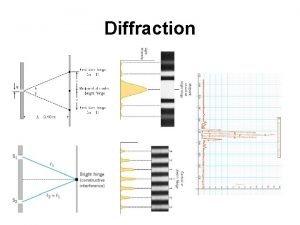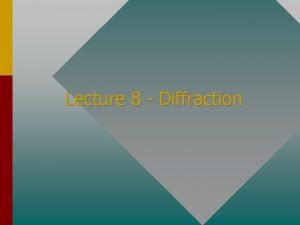ELECTRON DIFFRACTION EXPERIMENT WaveParticle Duality Up until now












- Slides: 12

ELECTRON DIFFRACTION EXPERIMENT

Wave-Particle Duality • Up until now, when you have met waves and particles, you will have treated them as separate entities. However, you will soon find that particles exhibit wave like behaviour and vice versa! This experiment will illustrate this. o Example: Light. Behaves like waves in Young’s double slit, behaves like particles in the photoelectric effect. • In 1926, De Broglie brought forward his theory on wave-particle duality, which predicted the above phenomena • Today you will perform a very similar experiment, in which you will investigate the wave nature of electrons, measuring there De Broglie wavelength. You will also use them to measure the lattice spacing of graphite.

In The Box In the box you will find: • A cathode ray tube (electron gun) containing a piece of graphite that acts as a diffraction grating • A high voltage power source • Vernier Callipers • Power pack

Set up • Set up the apparatus as shown below. Make sure the wiring behind the electron gun matches that on the image!

What is happening? • Electrons are produced with an electron gun, a cathode filament which produces electrons when heated by a small lamp in the apparatus. • The electrons are accelerated across a large potential difference • They pass through a thin layer of graphite which acts as a diffraction grating • A diffraction pattern of two circular rings will appear on the screen. Check you can see this. The lights may need to be turned off. • The radius of the rings should change with changing voltage, verify this also occurs.

Diagram

Procedure • Connect up the apparatus and play around with the voltage until you see two well defined rings. • Pick a voltage and measure the diameter of both rings using the Vernier Callipers • Question: What will you use as your uncertainty in the diameter measurement? • Answer: The largest source of uncertainty should arise from the thickness of the rings, which should be a few mm. • Now you can determine the de Broglie wavelength. Using one of your diameter measurements, determine the electron momentum. • Question: Staring from the electron gun equation, how can you obtain electron momentum?

Answer •


Graphite Spacing •

Result • Calculate both the lattice spacing's (one for each ring) Question: Why are there two difference lattice spacing's? Answer: This piece of graphite follows a hexagonal structure, so one of the constants represents the space between atoms of the same layer, the other represents the spacing of adjacent atoms between layers. The accepted values are: • 2. 4612 x 10^-10 m • 6. 7079 x 10^-10 m

Analysis • Do your results for the spacing's agree with the accepted values within experimental uncertainty? • If not, what went wrong? • What was the largest source of error? • Could the experiment be improved in any way?
 Electron diffraction experiment results
Electron diffraction experiment results øystein prytz
øystein prytz Electron experiment
Electron experiment Electron experiment
Electron experiment Now i see it now you don't
Now i see it now you don't Sensitivity analysis and duality
Sensitivity analysis and duality Arbitrary in linguistics
Arbitrary in linguistics Non-duality
Non-duality Tabel keanggotaan himpunan
Tabel keanggotaan himpunan Holographic duality theory
Holographic duality theory Setting of jekyll and hyde
Setting of jekyll and hyde Duality in discrete mathematics
Duality in discrete mathematics Rect(t-1/2)
Rect(t-1/2)



